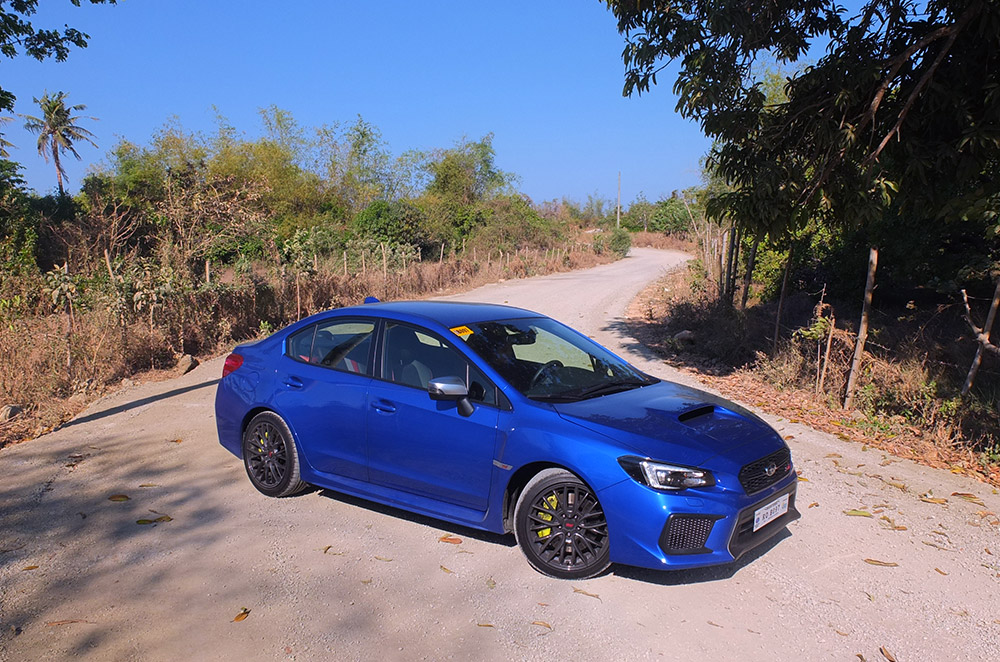
With a myriad of car choices in our local automotive market, a lot of information can be lost amongst all the marketing speak and sweet talk from your local dealership. Chances are, if you’ve spent a good amount of time on the internet browsing car related topics, you’ll come across some comparisons between technical terms, determining which is better than the other, and what certain things do. In the noise of people sharing their personal experiences, whether they are based on actual facts or chance occurrences, some misinformation can definitely slip through the cracks and become facts for some people.
In this article, we’ll be tackling the advantages and disadvantages of front-wheel drive (FWD), rear-wheel drive (RWD), and all-wheel drive (AWD) setups in the cars currently sold in the market today. We don’t want to get too technical, but we’ll try our best to help you make a decision on what better suits your needs, and, hopefully, when you go shopping for your next car, you appreciate the brochure a little bit better.
Front-Wheel Drive

Chances are, the very car you drive on a daily basis has a front-wheel drive setup. FWD means that the front wheels pull the car forward. The decision for this design is simple: costing. It’s cheaper to design and build a FWD vehicle because there are fewer parts and the drivetrain can be installed easily as the chassis rolls down the assembly line. FWD is also lighter because it does away with separate transmission and axle assemblies found in the other types. In general, lighter means better fuel economy. Another benefit is that FWD cars have an advantage in grip since the engine sits directly atop the wheels that make the car move.
FWD cars do have their disadvantages, though. They are typically nose heavy, which isn't ideal for performance applications. This is because the front tires have to do two things at once: propel the car and turn according to the driver’s input. In high power FWD cars, torque steer, where the wheels may jerk to the left or right under hard acceleration, can be an issue, even in modern FWD cars with all the electronic nannies.
Rear-Wheel Drive

Rear-wheel drive is the configuration of choice for performance and service applications, as the simple and robust layout (such as those in solid axle designs) can take a lot of punishment. A RWD setup can also easily handle larger engines, such as those in race cars, SUVs, and trucks. You also get better handling performance with RWD because the traditional front engine/rear differential layout balances the vehicle’s weight more evenly between the front and rear axles. During hard acceleration, RWD cars tend to squat to the rear through weight transfer, also improving grip from the wheels that propel the car forward.
An RWD setup is not without flaws, however. While modern electronics have mitigated this effect somewhat, an RWD car tends to lose traction and fishtail more easily on slippery surfaces. RWD vehicles also suffer when it comes to steep uphills with loose surfaces, as the lack of weight in the rear will lead to wheelspin.
All-Wheel Drive

Right away, the best part about all-wheel drive is that it combines the advantages of FWD and RWD configurations, maximizing traction in both dry and wet driving conditions. While some AWD cars are based on FWD and RWD setups, all four wheels work together to help propel the car forward, creating a continuous and electronically monitored/assisted forward motion.
It’s not all rainbows and butterflies, however, as the major disadvantages to AWD come in two factors. Weight is the first, as AWD setups can increase vehicle mass by a good number of kilograms, resulting in poor fuel economy. Much more so if the engine is larger to compensate for the weight. The last disadvantage is the cost of AWD systems, as the sticker price of vehicles equipped with such equipment can cost significantly more than FWD or RWD counterparts. You’re also looking at more stuff to replace or service if something goes wrong.
Latest Features
-
The difference between wax and polish / Tips & Advice
Confused about whether your car needs a wax or polish? This article will guide you on what they are and what to choose for your car.
-
The 6 things every Ford Ranger must pass before it leaves the factory / Featured Article
Every Ford Ranger, from the base model to the Ranger Raptor, goes through a full inspection process before it leaves the factory. This includes six steps that make sure it’s ready to drive a...
-
Which GAC AION EV is best for your everyday lifestyle? / Featured Article
The GAC AION lineup has something for everyone, maybe you're after space, speed, or just a smooth city drive. Here's a quick breakdown of which model might work best for your day-to-day life...
Popular Articles
-
Cheapest cars under P700,000 in the Philippines
Jerome Tresvalles · Sep 02, 2024
-
First car or next car, the Ford EcoSport is a tough package to beat
Jun 18, 2021
-
Car Maintenance checklist and guide – here’s everything you need to know
Earl Lee · Jan 12, 2021
-
Most fuel efficient family cars in the Philippines
Bryan Aaron Rivera · Nov 27, 2020
-
2021 Geely Okavango — Everything you need to know
Joey Deriquito · Nov 19, 2020
-
Family cars in the Philippines with the biggest trunks
Sep 20, 2023
-
Head to head: Toyota Rush vs. Suzuki XL7
Joey Deriquito · Oct 28, 2020
-
Why oil changes are important for your car
Earl Lee · Nov 10, 2020
-
2021 Kia Stonic — What you need to know about it
Joey Deriquito · Oct 16, 2020
-
Top 7 tips for buying a used car in the Philippines
Joey Deriquito · Nov 26, 2020



